3+ Instant Ways to Screen Mirror Mac to Samsung TV with Troubleshooting
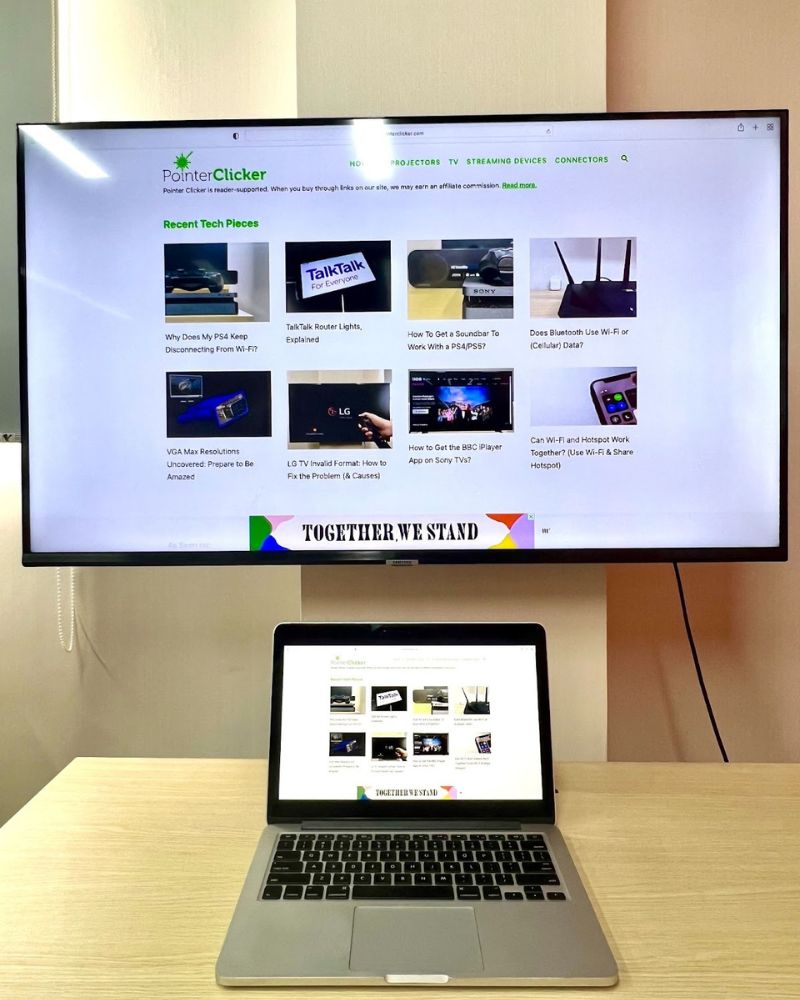
- To use AirPlay 2 for screen mirroring: Ensure both MacBook & Samsung TV (2018 or newer) are on the same Wi-Fi > Enable AirPlay on TV by going to Settings > General > Apple AirPlay Settings > Toggle On the AirPlay option > On MacBook, open Control Center > Screen Mirroring > Choose your Samsung TV > Choose to duplicate or extend screen.
- For Macs without HDMI, use a streaming device like Apple TV, Roku, or Fire TV Stick and follow the device-specific mirroring steps in the article.
- Troubleshoot AirPlay issues by checking network compatibility, rebooting devices, or creating a new Apple account if mirroring fails.
Our concise guide provides hassle-free screen mirroring methods for your MacBook and Samsung TV, covering both wired and wireless options.
Encounter hiccups along the way? The article is also equipped with troubleshooting tips to swiftly resolve any mirroring mishaps.
Quick Navigation
1. Utilize the AirPlay 2 Feature
Step 1: Verify if Your Samsung TV Supports AirPlay 2
Certain Samsung TV models released in 2018 or later support the new-and-improved version of AirPlay: AirPlay 2.
Like its predecessor, AirPlay 2 also allows you to wirelessly mirror your MacBook’s screen to supported displays, such as your Samsung TV.
To verify if your Samsung TV supports AirPlay 2, check this complete list of compatible TV models. If you’re not sure what your TV’s model number is, you can find it in the Settings menu.
Follow the steps below to find your Samsung TV model number in its settings.
Step 1: Press your TV remote’s Home key and navigate to support.
Step 2: Go to About This TV.
Step 3: Find the Model Code before searching for it in this list or online.
Step 2: Enabling Airplay on Samsung TV
Before you can screen mirror your Mac, you will need to enable AirPlay on your Samsung TV via its settings.
Step 1: Find and press your Samsung remote’s Home button.
Step 2: Use the arrow buttons to head to the left-side menu. Then, scroll and select Settings using your remote’s Enter/OK button.
Step 3: Head to General.
Step 4: Then, click on Apple AirPlay Settings.
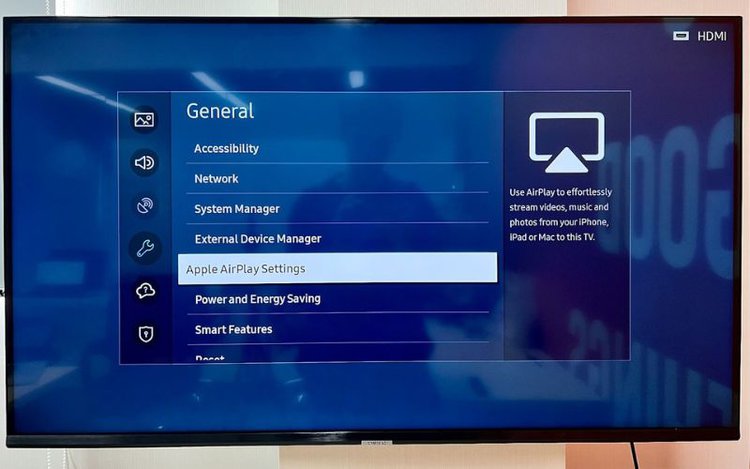
Step 5: Find the AirPlay option and toggle it On.
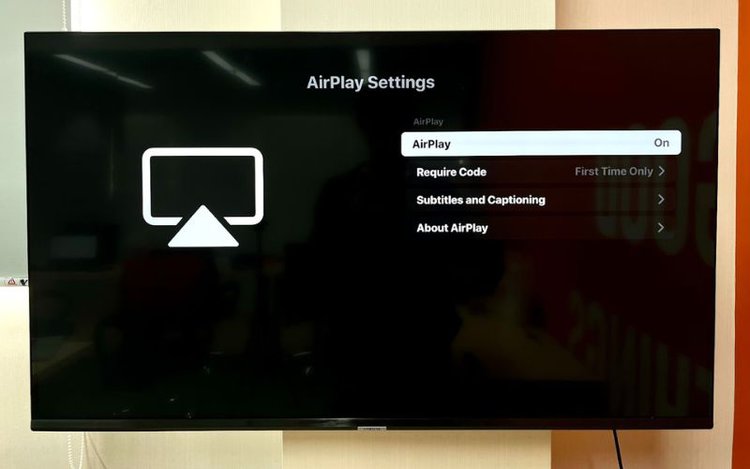
Step 6: (Optional) You may also change the Require Code setting to First Time Only if you’re doing this on your home TV and don’t want to re-enter a code every time you pair your Mac to your Samsung TV.
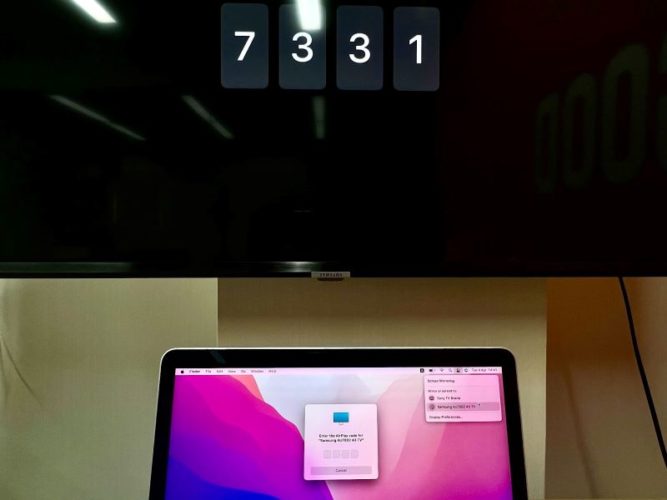
Step 3: Screen Mirroring a Mac
Before you proceed to the following method, ensure that your Mac and Samsung smart TV are connected to the same network.
You can check and adjust your Mac’s network settings by clicking the Wi-Fi icon in the menu bar.
To find your Samsung TV’s network settings, go to Home, Settings, followed by General. Then, click on Network.
Once you’ve ensured both devices are connected to the same network (e.g., Wi-Fi or a mobile hotspot), you’re ready to pair them.
Step 1: Navigate to your Mac’s menu bar (found at the top of your screen) and select the Control Center icon.
Step 2: Find and select the Screen Mirroring icon.
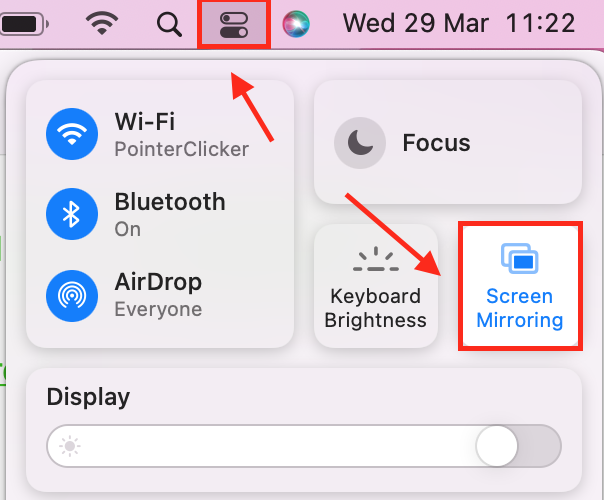
Step 3: Now, you should be able to see and select your Samsung TV’s name from the list.
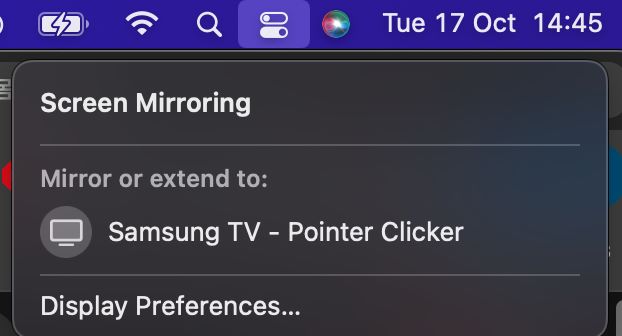
Step 4: Enter the PIN code that appears on the TV (if any), and then choose either Mirror Built-in Display (duplicate) or Use As Separate Display (extend).
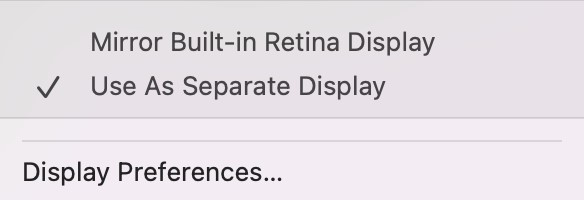
2. Use an HDMI Cable
Many Mac models no longer feature an HDMI port to accommodate their sleek design. If your MacBook doesn’t have an HDMI port, head to the next section to learn how to complete this process.
But if you still want to connect your HDMI-incompatible MacBook to your TV via a wired connection, check out our comprehensive guide to learn how.
Even though the guide primarily focuses on connecting a MacBook to a projector, you’ll find that the same process can seamlessly apply to your TV as well.
Step 1: Connect an HDMI cable to your MacBook and Samsung TV’s HDMI ports.
Step 2: Press your Samsung TV’s Home button.
Step 3: From here, head to Source and choose the Input you’ve connected the HDMI cable to (e.g., HDMI 1, 2, etc.).
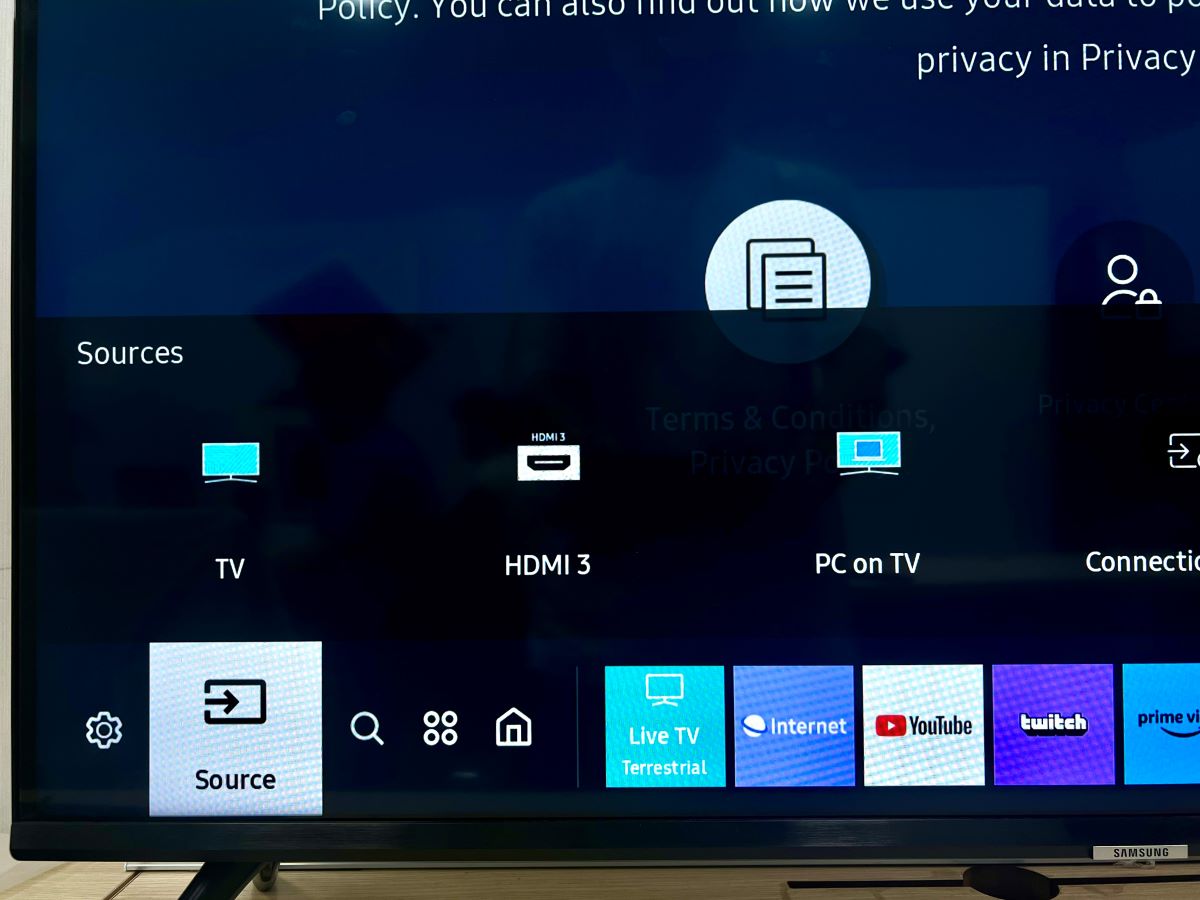
3. Use a Streaming Device
If your Samsung TV was released in 2017 or earlier, or your MacBook doesn’t have an HDMI port, the two solutions above may not work for you.
Luckily, there’s a way to screen mirror your MacBook to your Samsung TV even if neither device meets these requirements.
Several streaming device brands allow you to wirelessly connect your MacBook to your TV. The best part is that these streaming devices can be used on non-smart TVs!
Keep reading to learn how to wirelessly mirror your MacBook’s screen to an Apple TV, Roku, and Fire TV streaming device.
Apple TV
Step 1: Ensure your Apple TV and MacBook have a secure connection to the same Wi-Fi network.
1. You can verify which network your Apple TV is connected to by going to Settings, followed by Network.
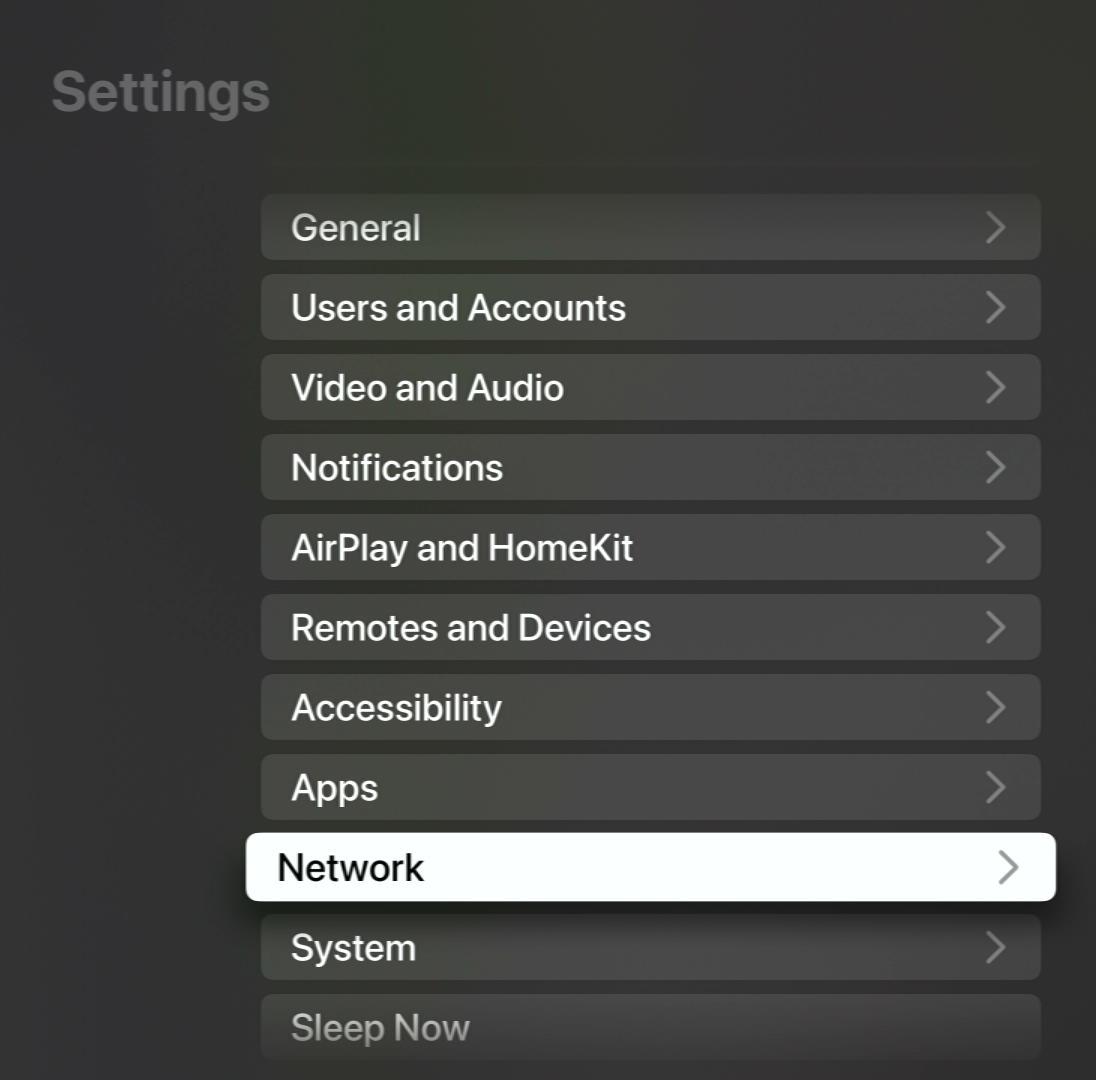
2. Find the Wi-Fi section to see which network your Apple TV is currently connected to.

Step 2: Now, head to your MacBook and open the Control Center icon found in the top-right corner of your screen. From here, click on Screen Mirror.
Step 3: If your Apple TV is connected to the same network as your MacBook, its name should appear in the device list. Select it accordingly.
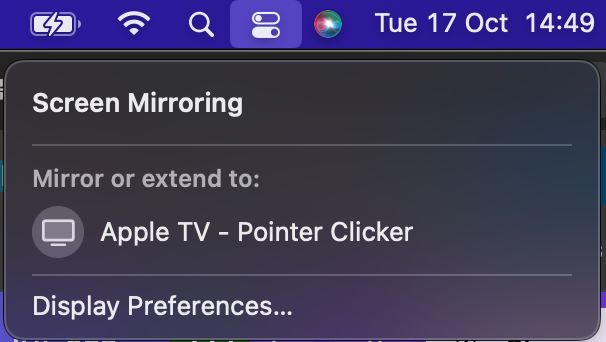
Roku
Step 1: Connect your Roku and MacBook to the same Wi-Fi network.
1. To see which network your Roku is connected to, open the Settings menu and click on Network.

2. Head to About to see which Network name your Roku is connected to. If this isn’t the same network name your MacBook is connected to, go to Set up connection to connect your Roku to the right Wi-Fi network.
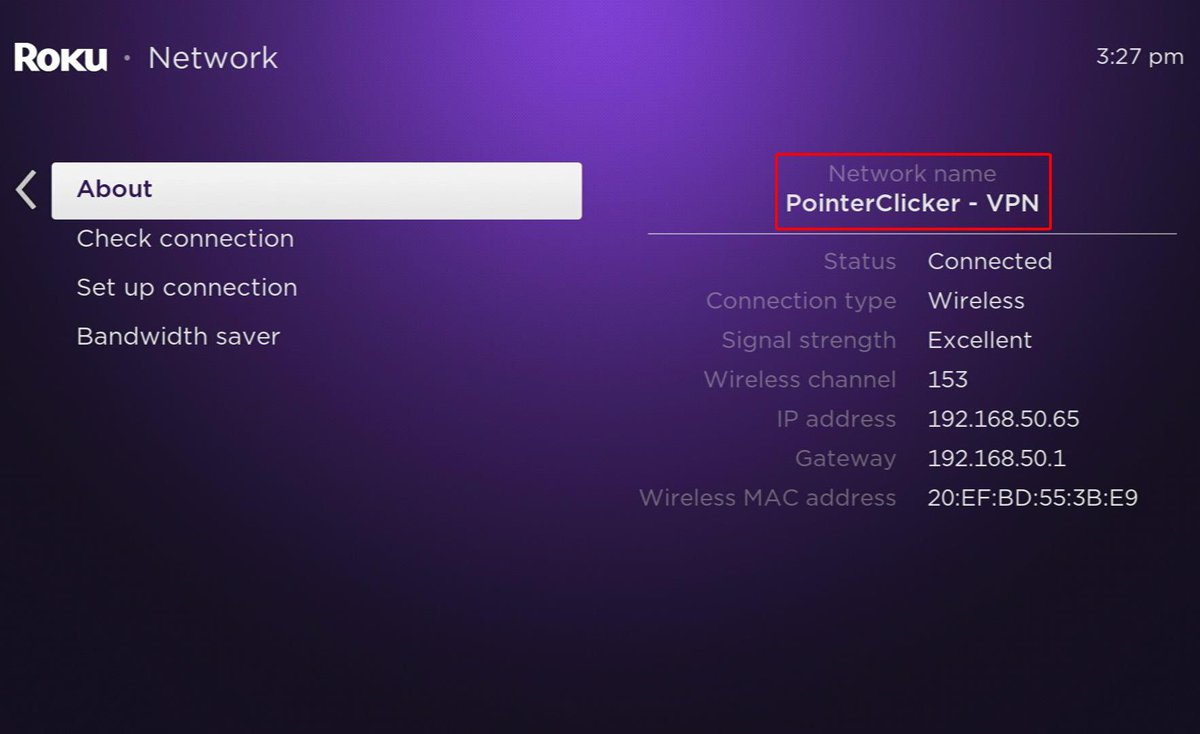
Step 2: Once you’ve verified that your Roku is connected to the same Wi-Fi network as your MacBook, head to your Roku’s Settings menu. Then, navigate to Apple AirPlay and HomeKit.
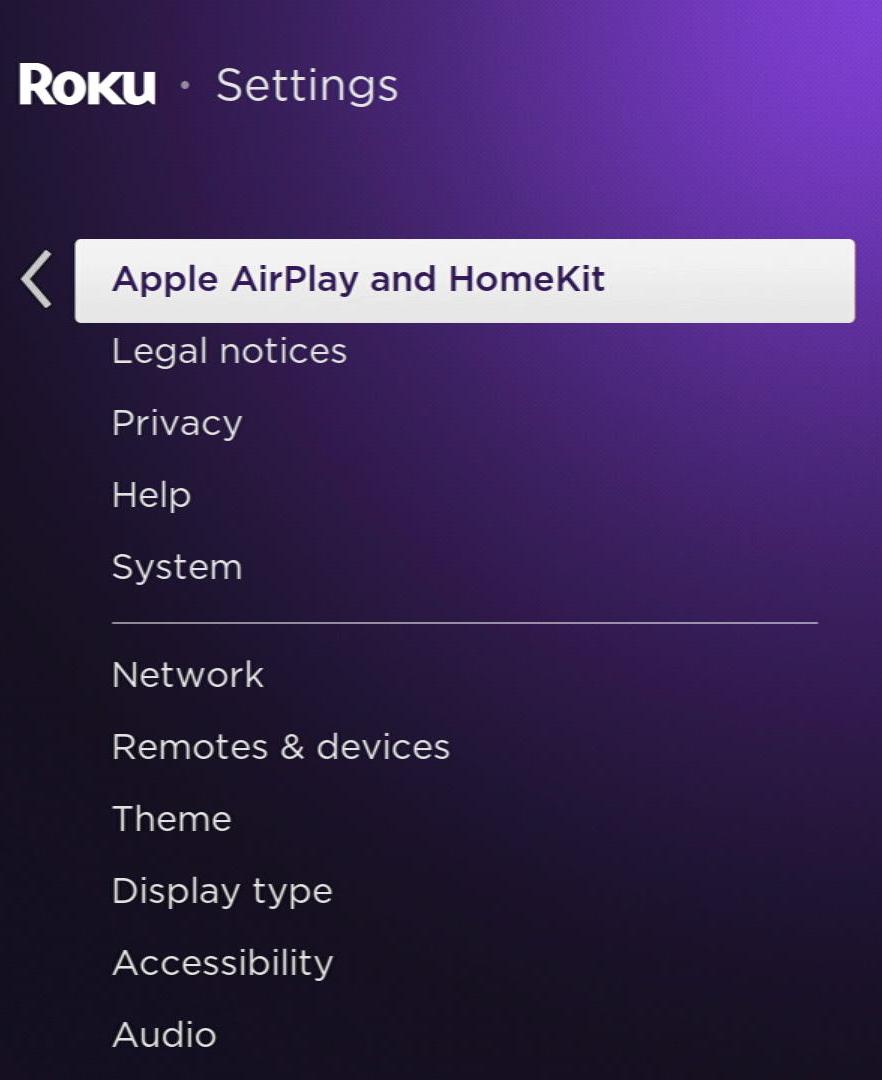
Step 3: From here, toggle AirPlay on.
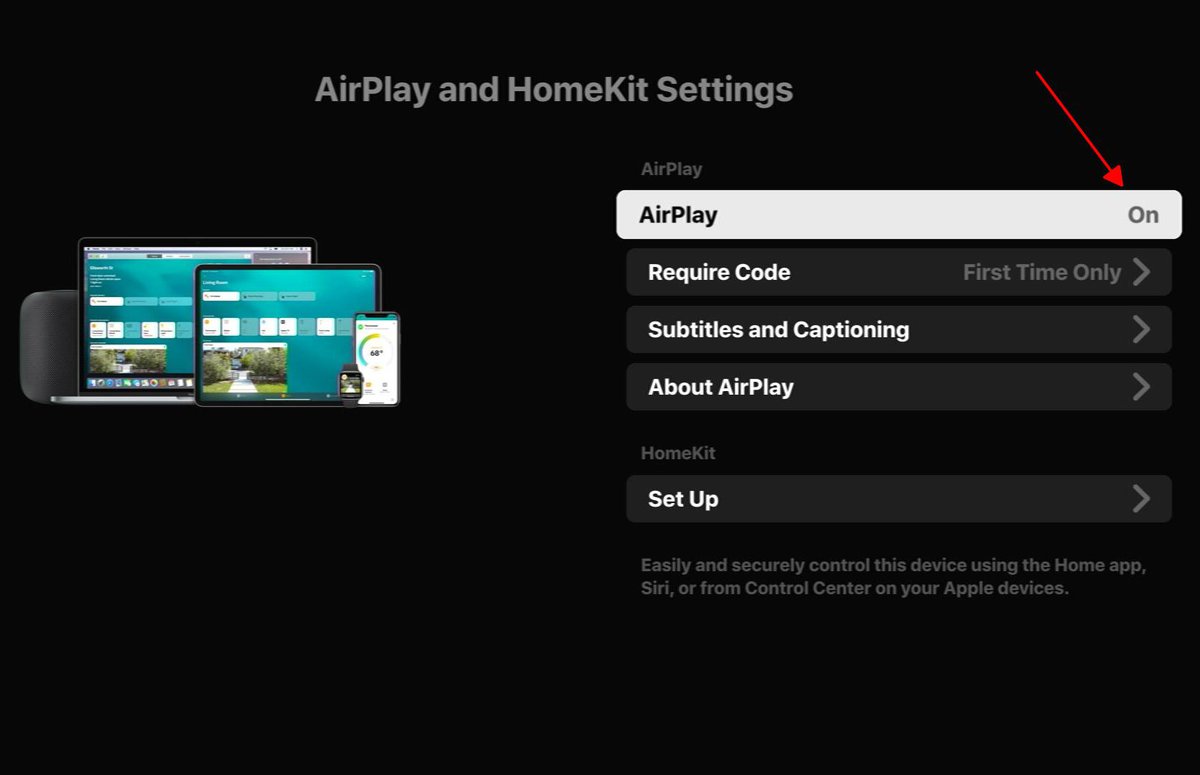
Step 4: Now, turn your attention to your MacBook and click on the Control Center icon in the top-right corner of your screen. In this menu, choose Screen Mirror.
Step 5: Click on your Roku’s name in the device list.
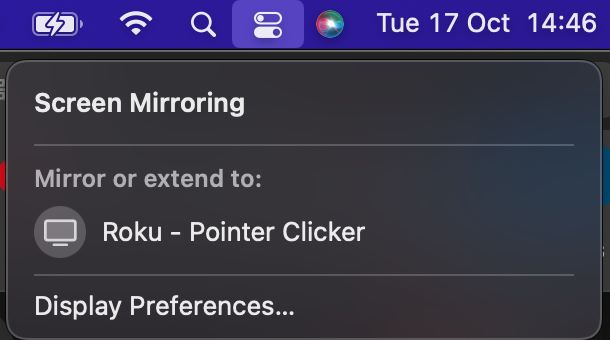
Fire TV Stick
While Apple TV and Roku allow users to directly cast content to them, Fire TV Stick users must install the AirScreen app on their Fire TV before screen mirroring to it.
This app will be the bridge between your MacBook and Fire TV’s AirPlay functions.
It’s easy (and free!) to download and use. Follow the steps below to learn how!
Step 1: Check that your Fire TV Stick and MacBook are connected to the same Wi-Fi network.
1. Launch your Fire TV Stick’s Settings menu. Then, navigate to Network.
![]()
2. Verify that your Fire TV is connected to the same Network as your MacBook, and adjust it if it isn’t.
Step 2: Now, it’s time to install the AirScreen app. Return to your Fire TV’s Home Screen and click on the magnifying glass icon to open the Find feature. Next, go to Search.
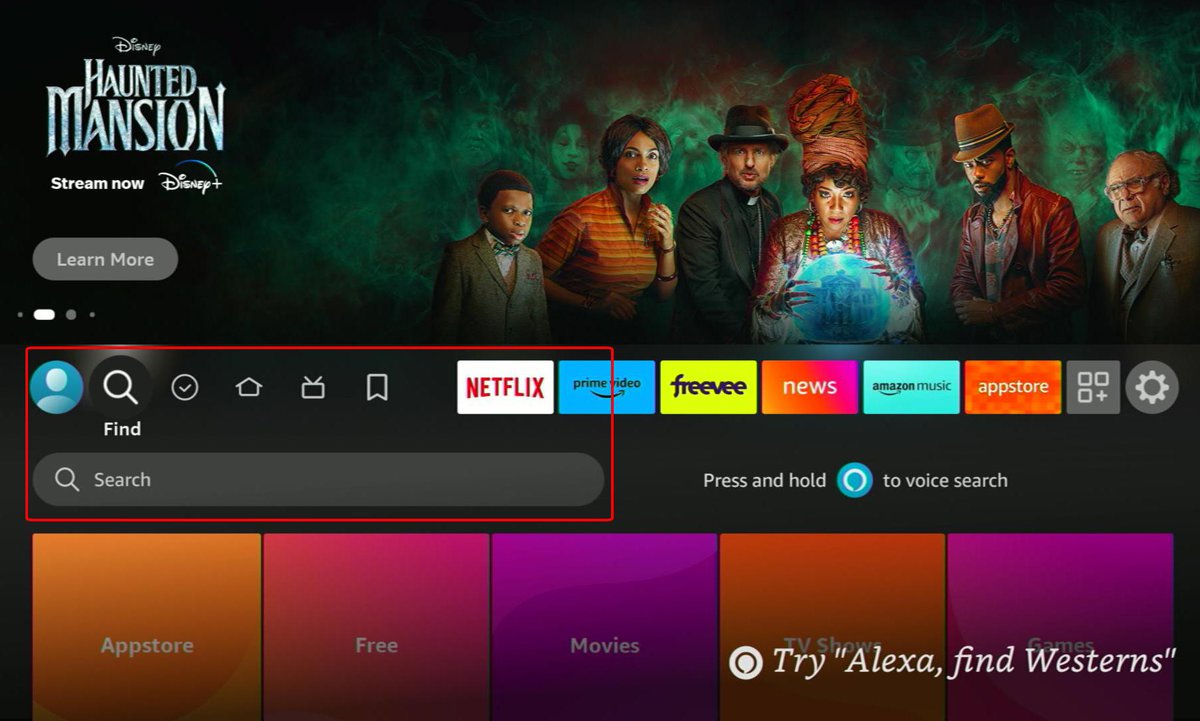
Step 3: Enter “AirScreen” into the Search bar. Then, Get it when it appears in the search results.
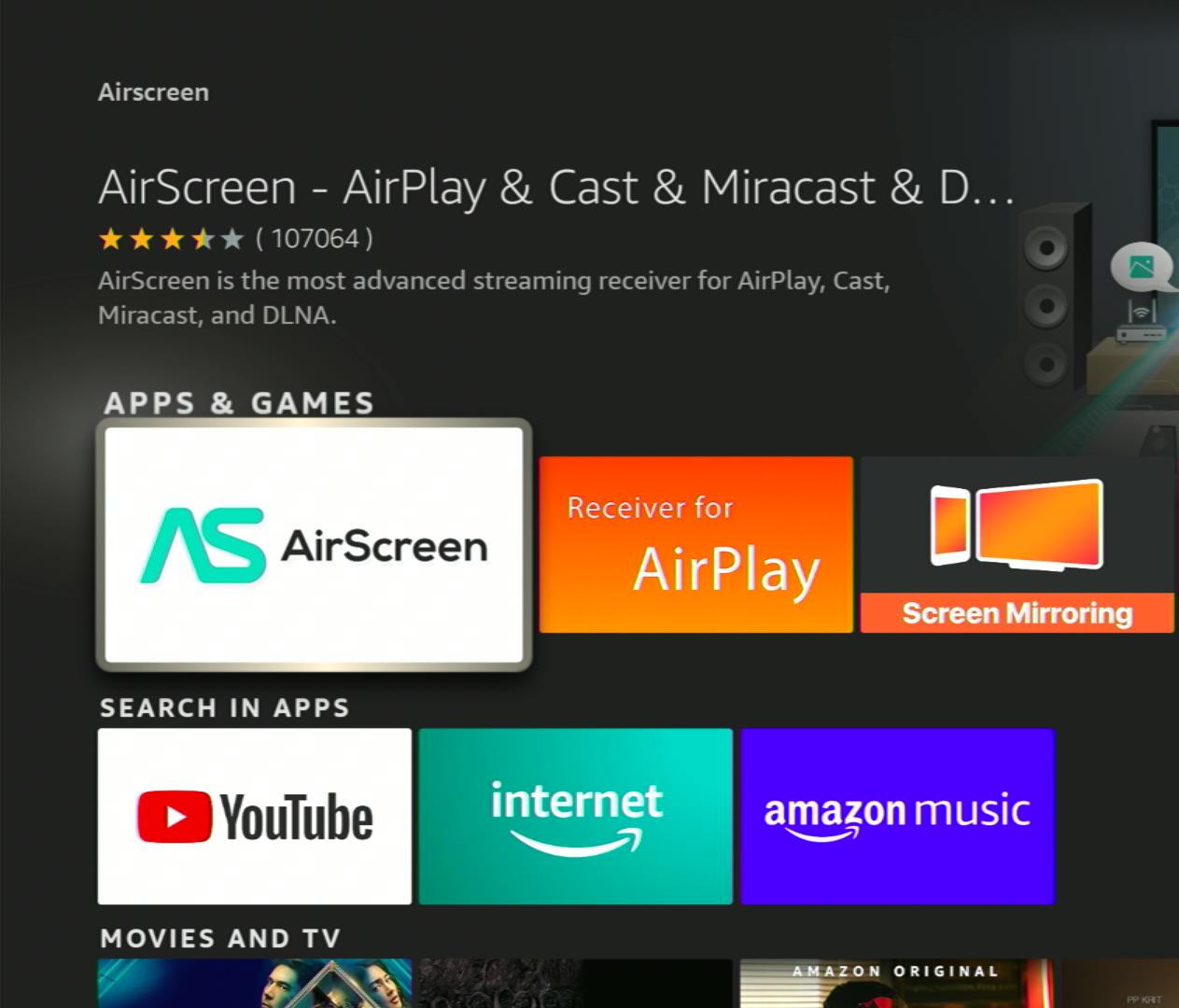
Step 4: Once AirScreen has finished installing, open it. Then, you can follow along with the welcome tutorials or click the X icon in the top-right corner to skip them and start using the app.

Step 5: Now, it’s time to enable AirScreen’s AirPlay function.
1. Open the AirScreen app’s Settings.
2. Navigate to AirPlay and tick the ON checkbox.
3. Here, you can also adjust the AirPlay’s name under the Device name tab if you’d like.
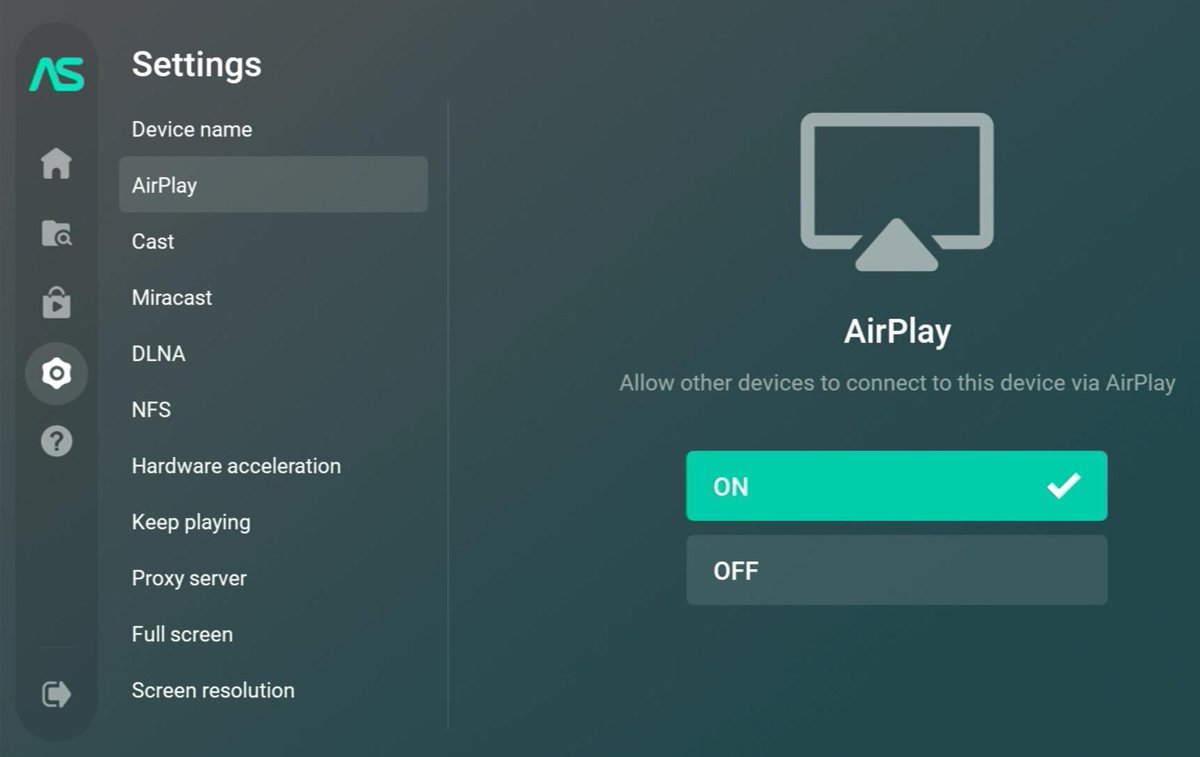
Step 6: Now, go to your MacBook and open the Control Center icon in the top right of your screen. Then, select Screen Mirror.
Step 7: Click on your Fire TV Stick’s name in the list.
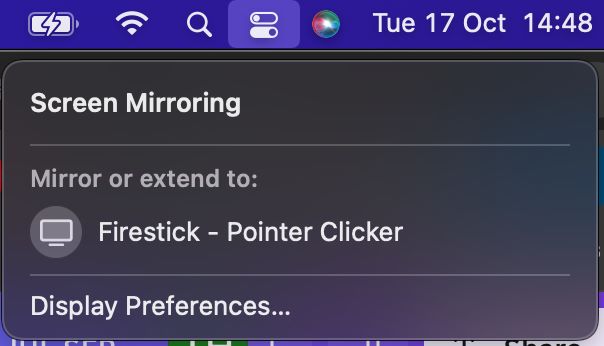
Troubleshooting: Why Can’t I AirPlay From My MacBook to the Samsung TV?
Wireless connections are usually convenient and straightforward. However, since they require several components to be compatible and synchronized, they can suddenly disconnect.
If this is happening to you, don’t worry. This is a common issue that rarely indicates any serious hardware or software issues.
Thankfully, I’ve outlined a few simple troubleshooting solutions to try if your MacBook or Samsung TV’s AirPlay function isn’t working.
These solutions cover a variety of possible issues so you can fix your pesky AirPlay problem once and for all.
1. Basic Solutions to Try
- Your Samsung TV model was released in 2017 or earlier and does not support screen mirroring via AirPlay. Consider using a wired connection or a streaming device instead.
- Your Samsung TV and MacBook are not connected to the same network. Verify which Wi-Fi networks they’re connected to and adjust them if needed.
- Your Samsung TV’s AirPlay feature is glitching. Try rebooting its AirPlay function by disabling it and then re-enabling it.
- Ensure your MacBook is within range of your Samsung TV, and move it closer if needed.
If you’re not sure how to verify your Samsung TV’s network connection, go back to the section “Utilize the AirPlay 2 Feature” for detailed instructions.
2. Internet Connection Problems
AirPlay uses Wi-Fi to connect two devices and cast content from one to another. So, AirPlay will be unable to do its job if your Wi-Fi connection is spotty, weak, or unstable.
In this case, it’s best to try these basic network troubleshooting solutions.
- Reboot your router by disconnecting it from power for at least 30 seconds and then reconnecting it. Your router may take a few minutes to reboot, so don’t worry if your Samsung TV and MacBook don’t immediately connect to it.
- Open your Samsung TV’s Network settings and forget your current Wi-Fi network by choosing to Delete it. Then, reconnect to it and enter the Wi-Fi password if needed.
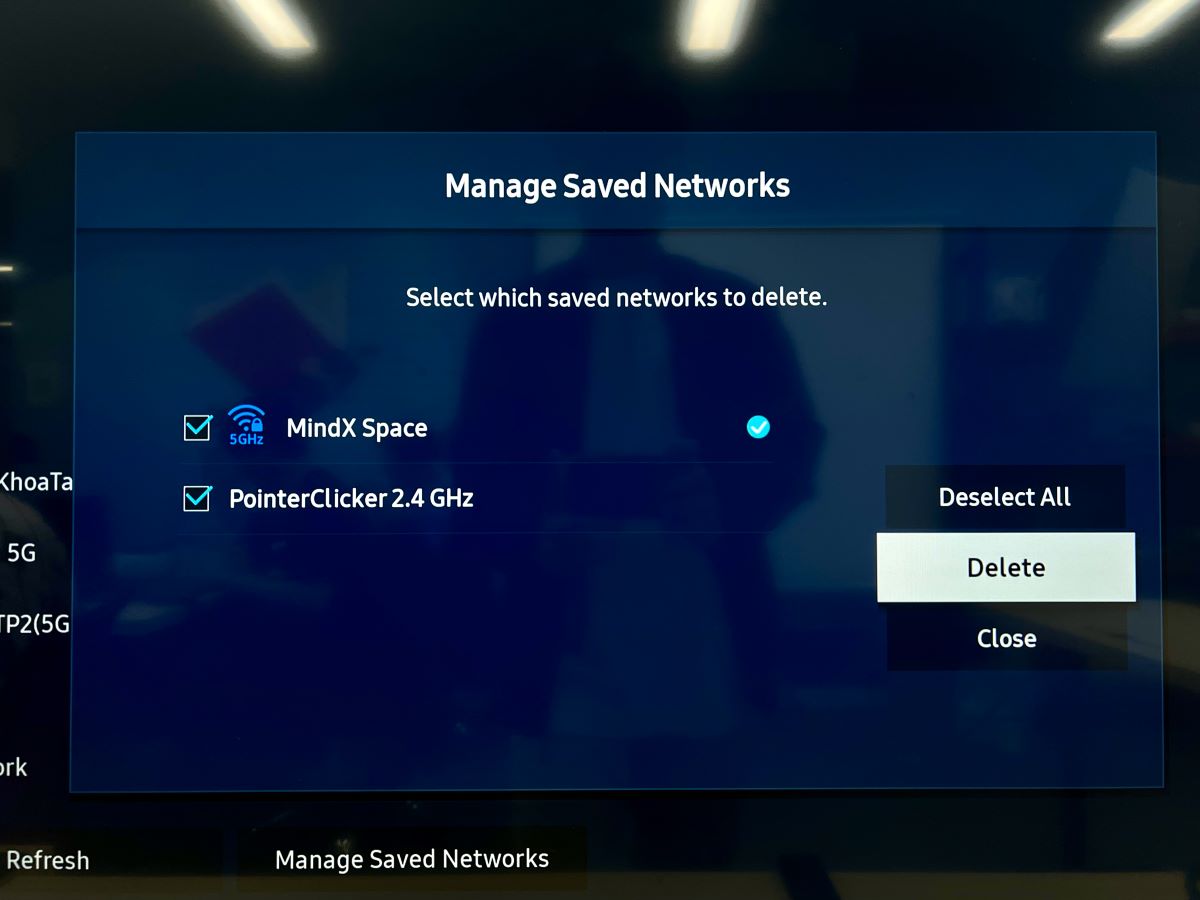
- Some Samsung TVs don’t support the 5GHz Wi-Fi band, as this user discovered. So, try switching your router to the much more versatile 2.4GHz band. Watch this video tutorial to learn how to adjust your router to the 2.4Ghz in a few easy steps.
- This user was struggling to use their Samsung TV’s AirPlay function and found that a wired internet connection did the trick. So, if your Wi-Fi is too slow to support AirPlay, try connecting your Samsung TV to your router using an Ethernet cable.
3. Create a New Apple Account
The issue may not lie with your Samsung TV or MacBook but actually with your Apple account.
This user found that they were struggling to use AirPlay when logged into a specific Apple account.
So, it’s a good idea to create or log into another Apple account to see if that resolves the issue.
Follow the steps below to create a new Apple account on your MacBook.
Step 1: On your Mac, open the Apple menu before going to System Preferences/System Settings.
Step 2: In the right-hand menu, select Sign in with your Apple ID.
Step 3: From here, go to Create Apple ID. Follow any instructions and insert the necessary information to create your new Apple ID. The email address you enter here will be the Apple ID username and linked to your new Apple ID account.
Step 4: When asked for your payment information, enter it and click Continue or skip this step by choosing None.
Step 5: Finally, head to your email and look for Apple’s verification email. Now, you can verify your email address and finish setting up your account.
Wrapping Things Up
Screen mirroring your MacBook to your Samsung TV couldn’t be easier!
If your Samsung TV supports AirPlay 2, you can wirelessly mirror your MacBook’s screen to it using only a secure Wi-Fi connection. Alternatively, you can link these two devices via a wired connection using an HDMI cable.
Streaming devices are a great way to give your TV AirPlay capabilities without breaking the bank. They connect directly to your TV’s HDMI port and will allow you to wirelessly cast content from your MacBook to your TV.
Should you come across any issues throughout this process, don’t forget to try our troubleshooting tips, check and reboot your internet connection, or create a new Apple ID.
What’s your experience mirroring your MacBook’s screen to a Samsung TV?
Let us know in the comments below!
Yesenia Achlim is a technical copywriter and editor with a focus on AV equipment. She aims to break down complicated topics and make technology accessible, no matter your technical expertise. When she’s not teaching you how to replace a projector lamp, you can find her reading and baking.

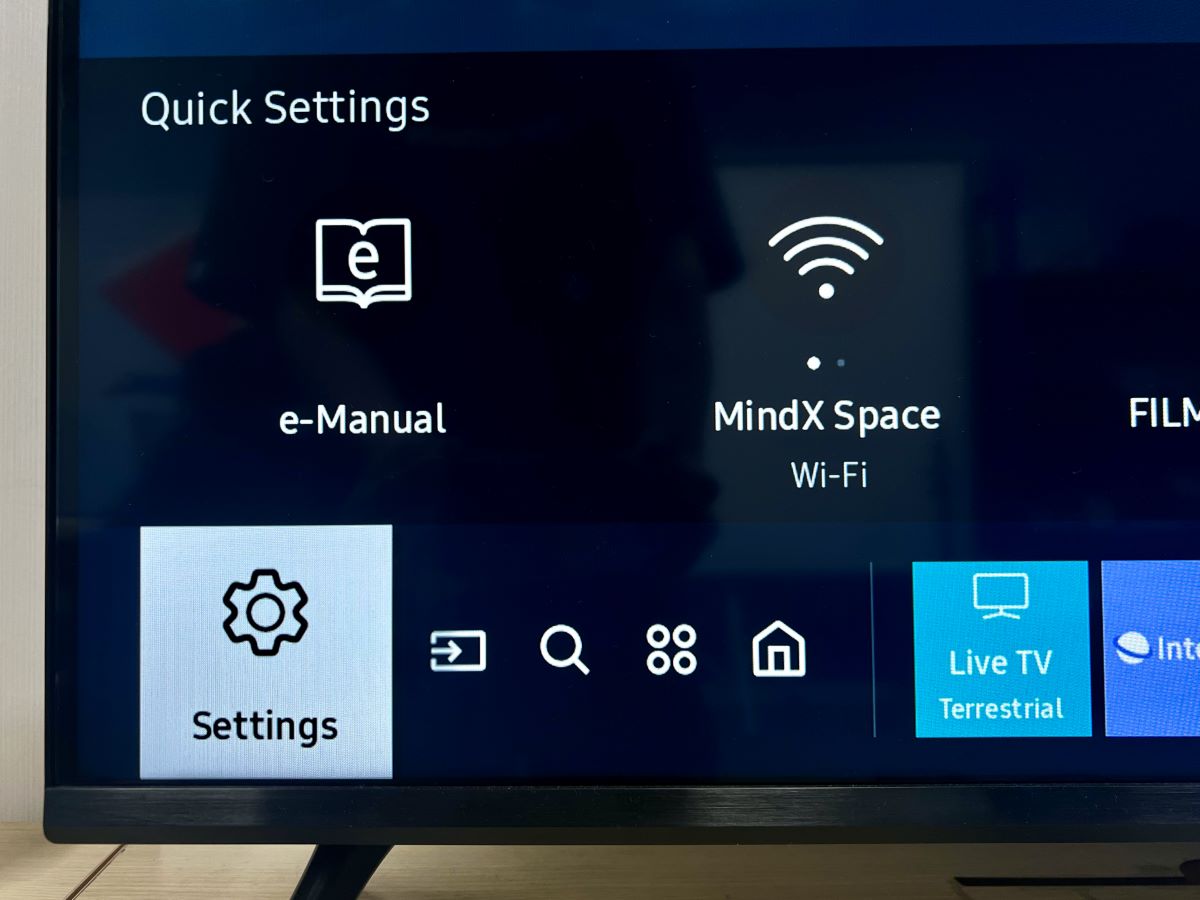


I followed your excellent instructions but the mirror image of my laptop comes up on the TV side-by-side with a TV broadcast station window. Is there any way to get the TV to show only my laptop screen, filling its own screen with it?
Thanks!
Syl